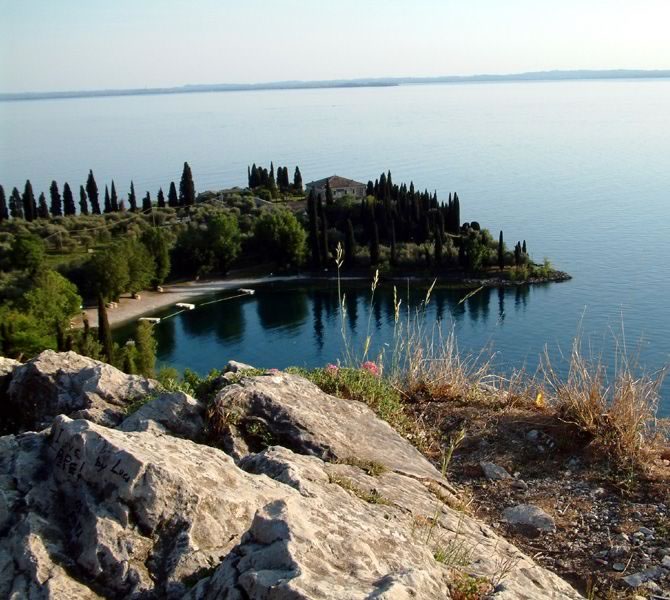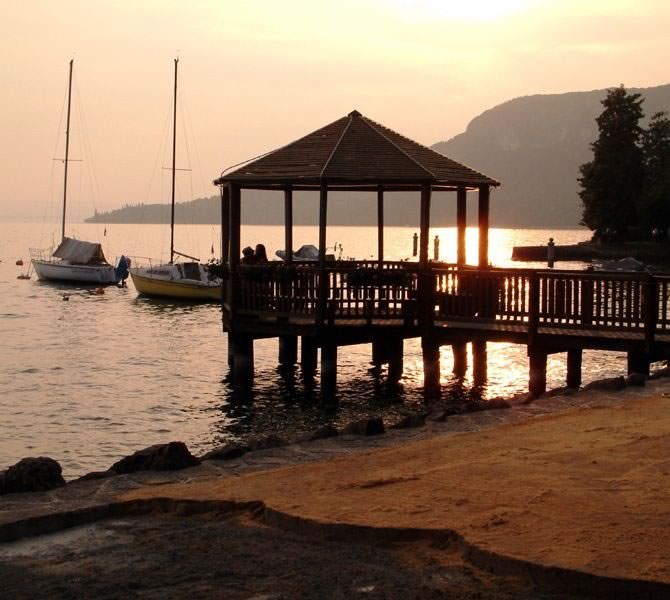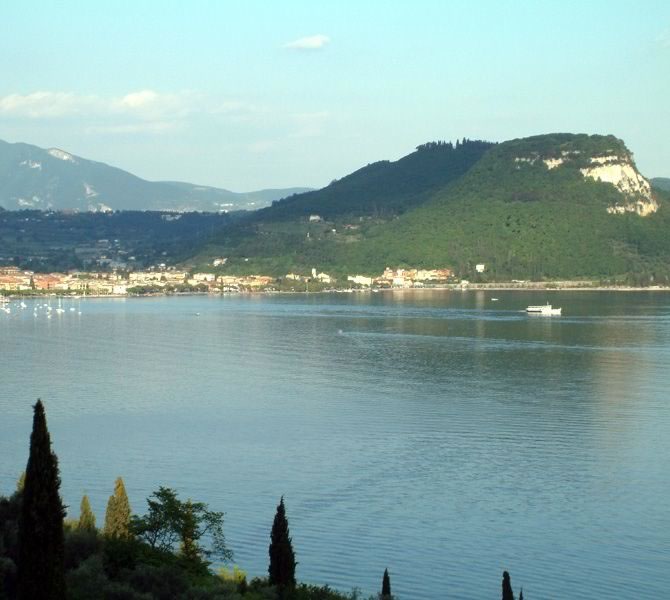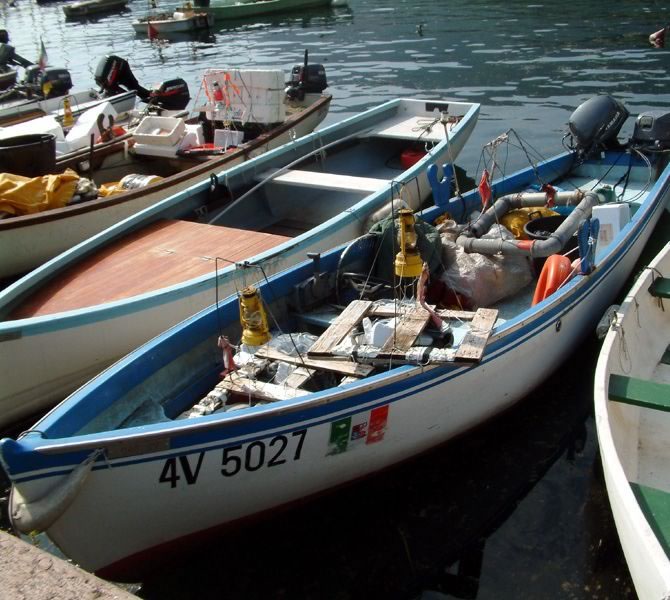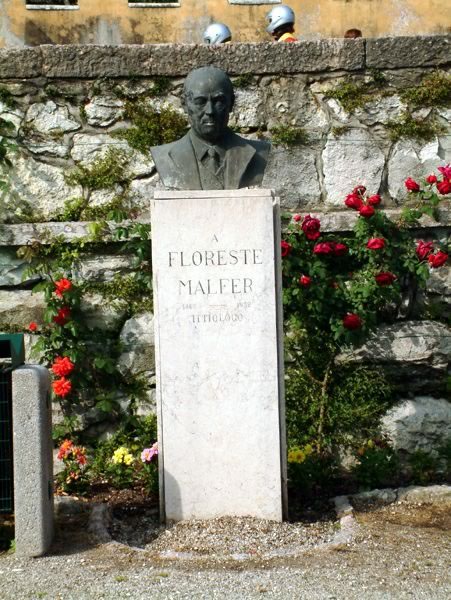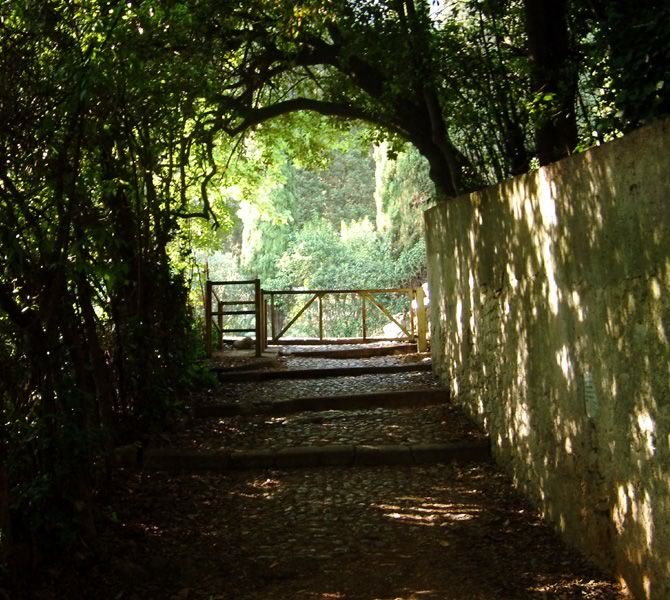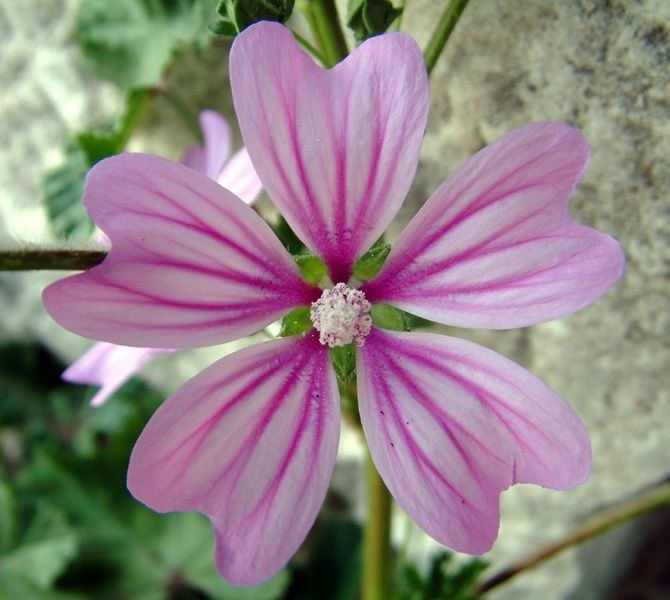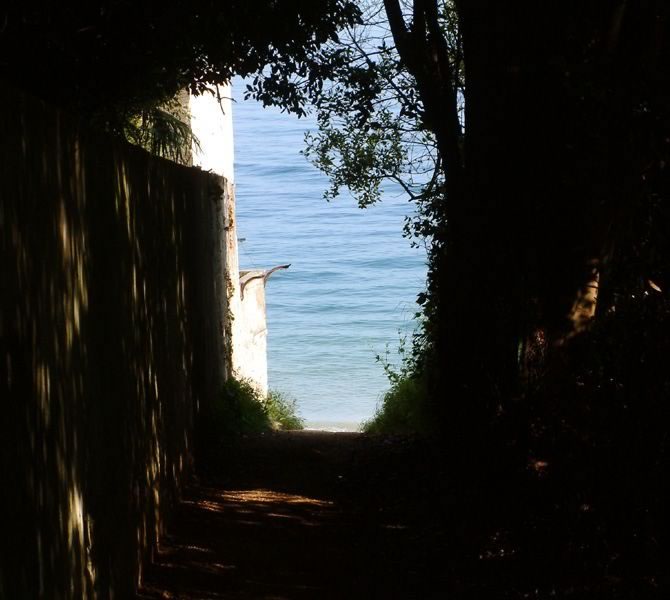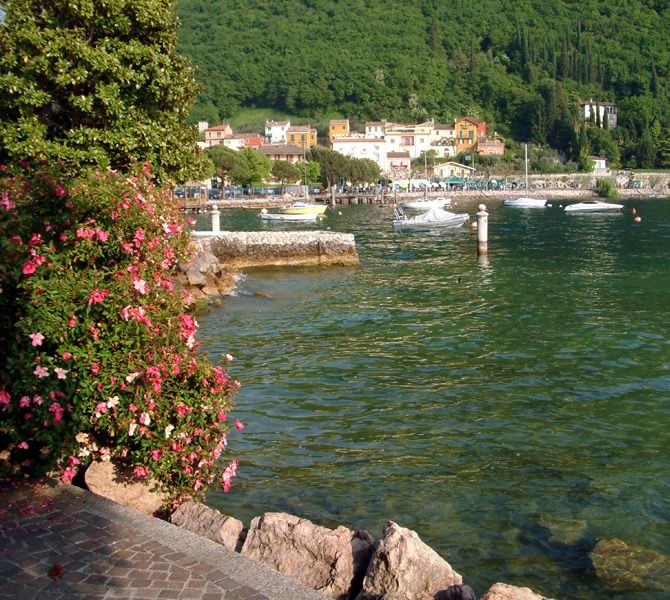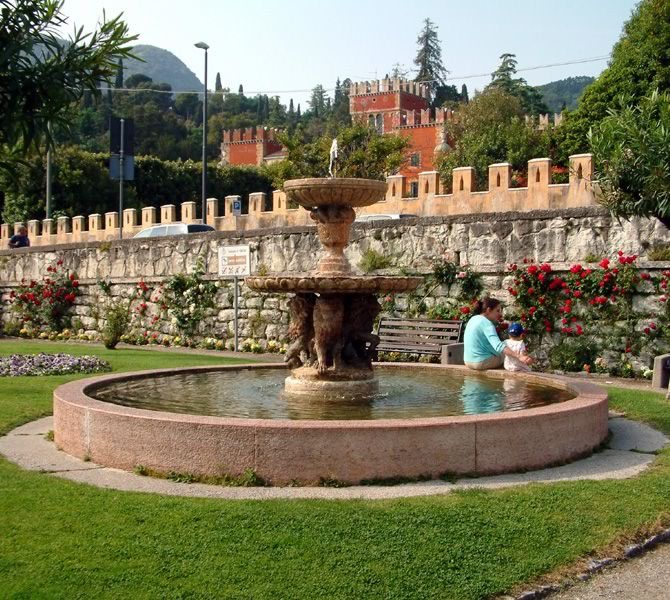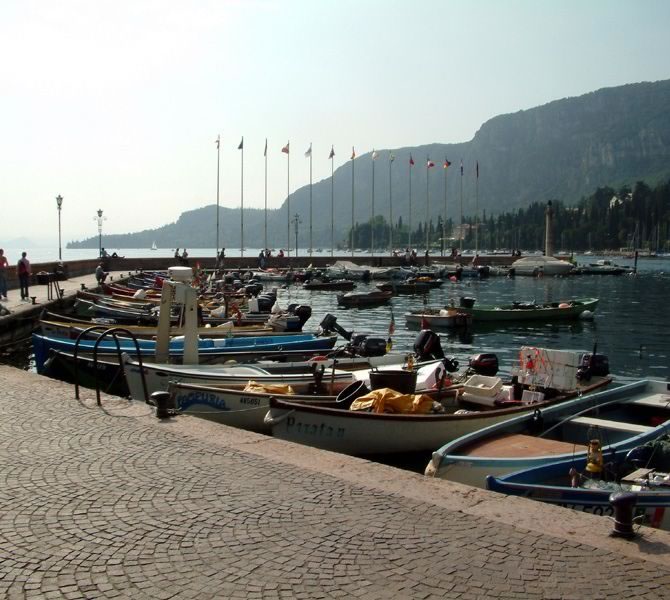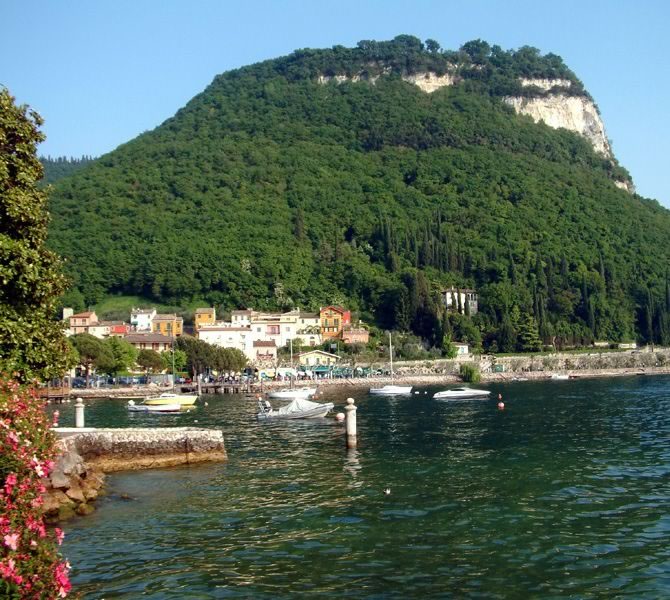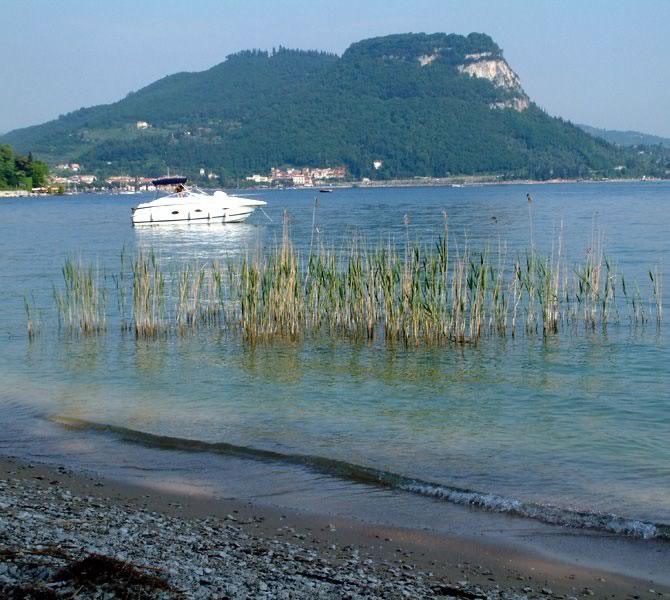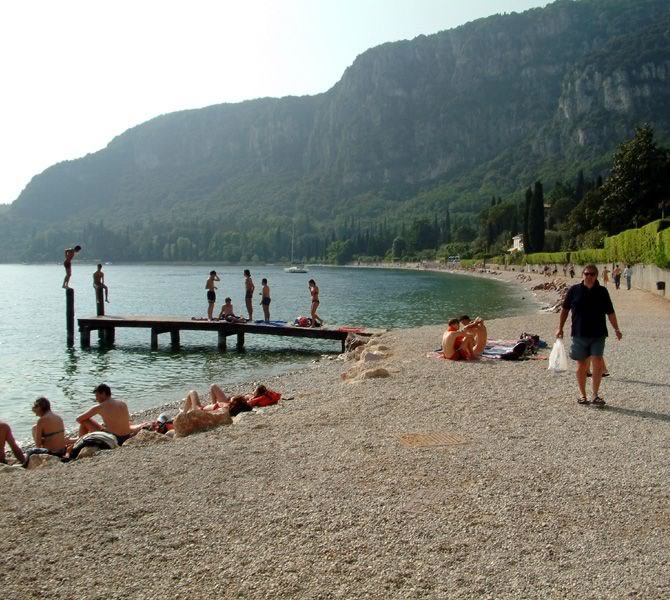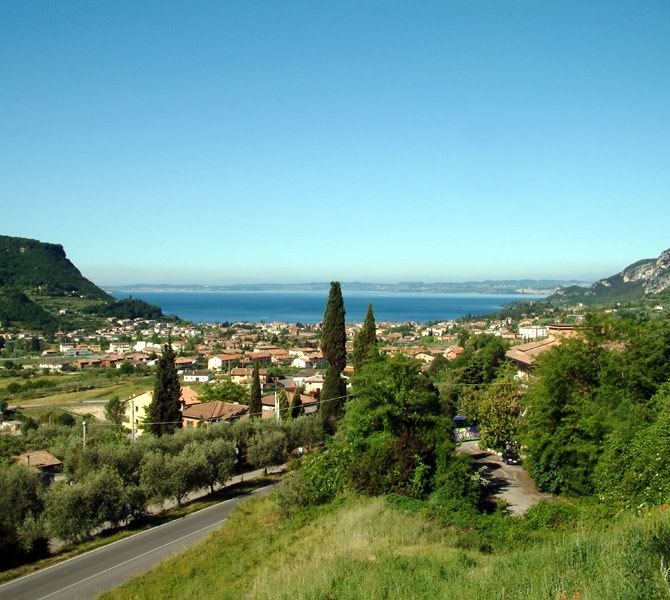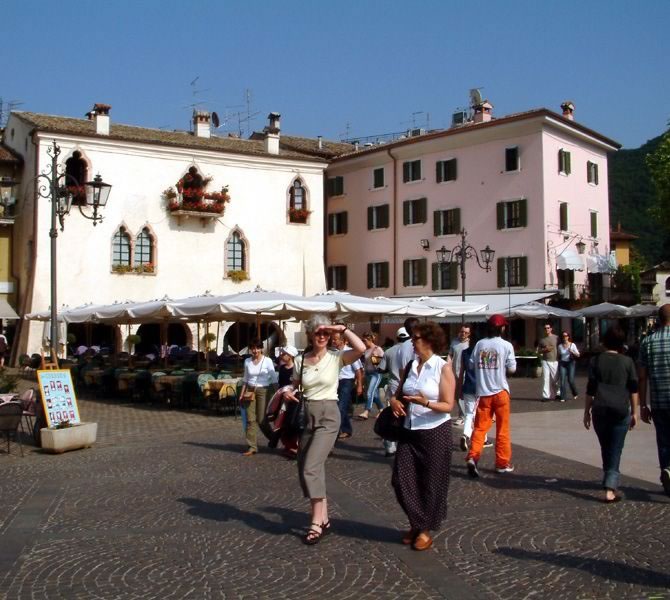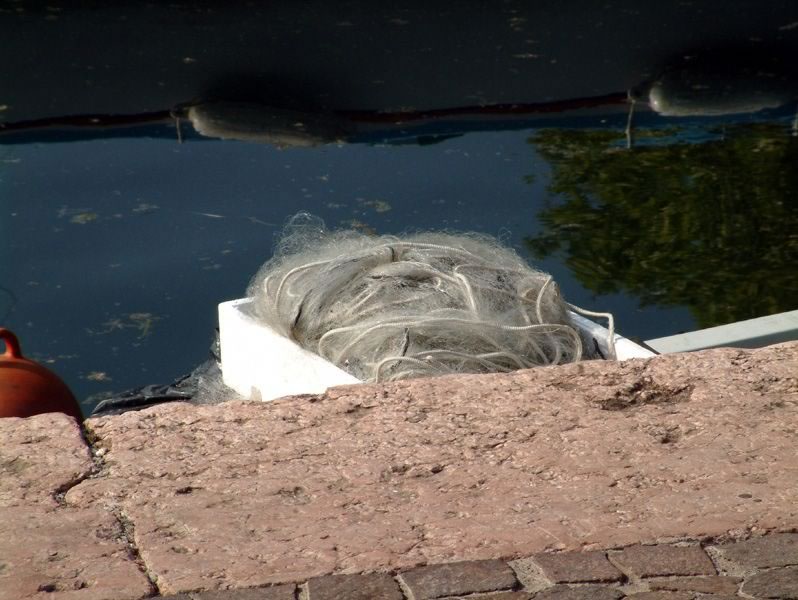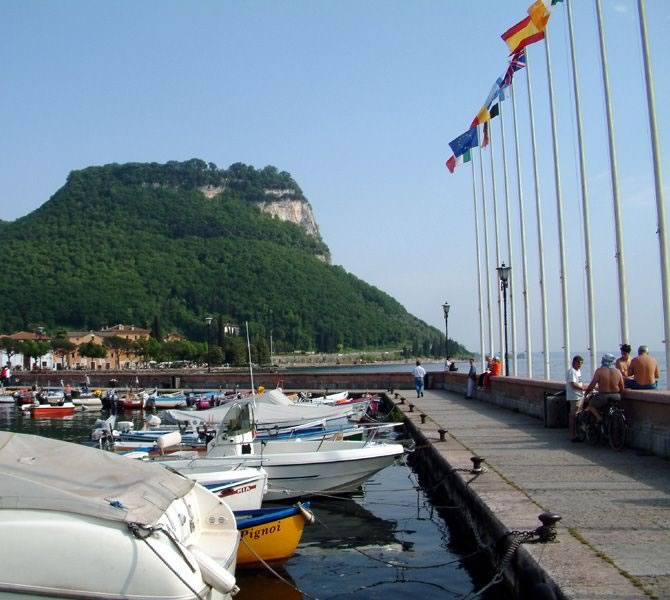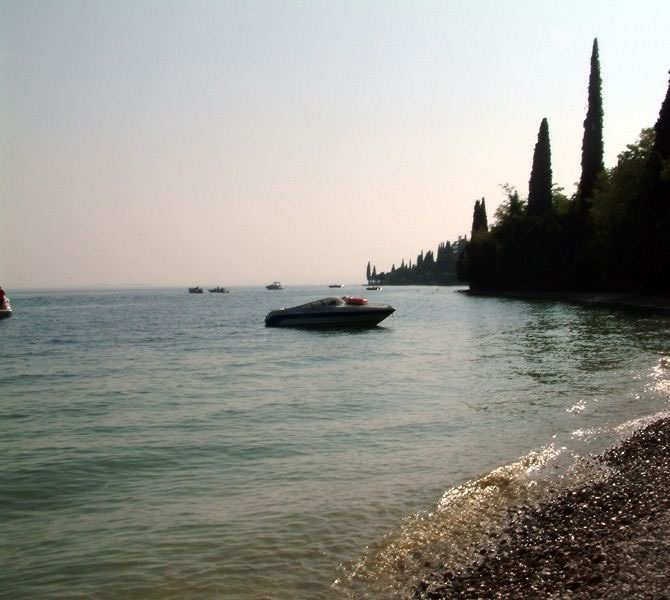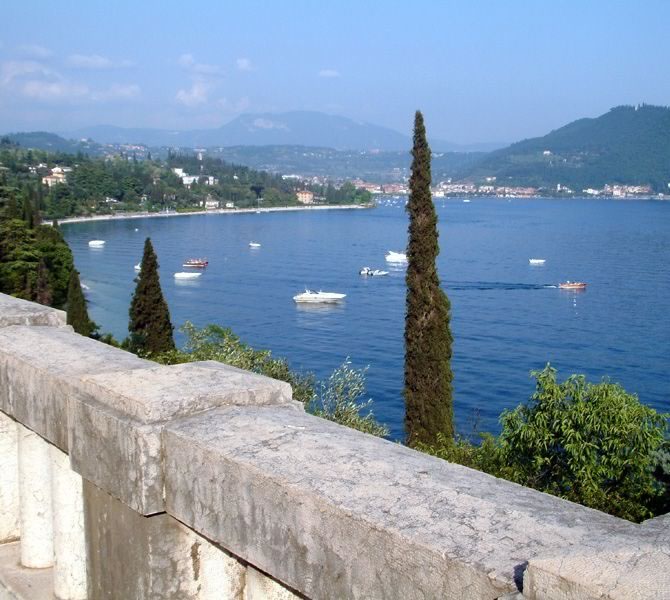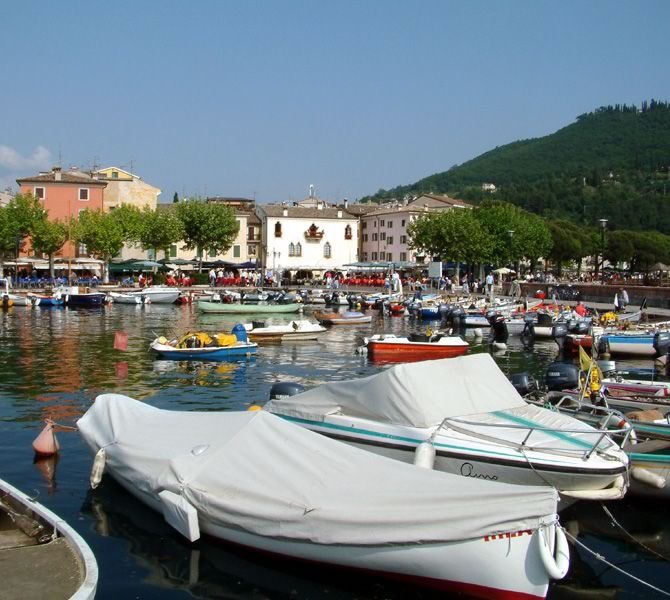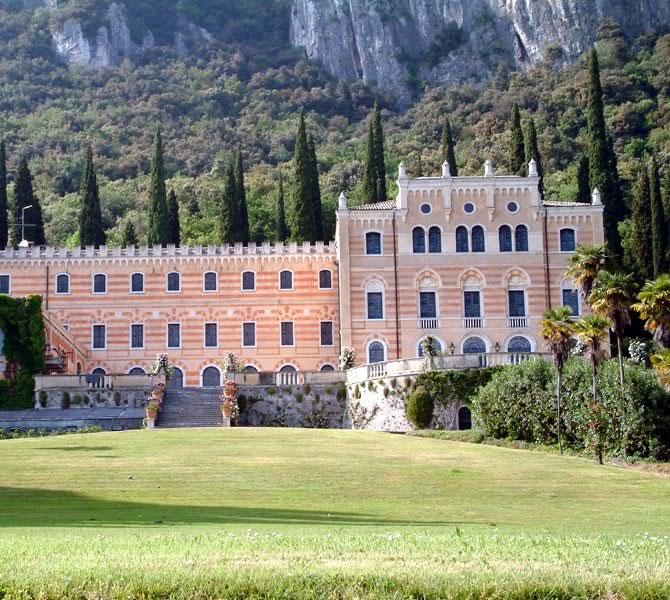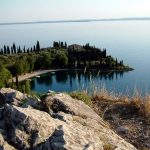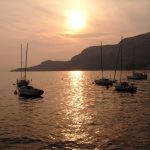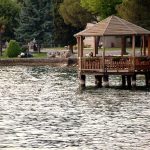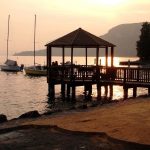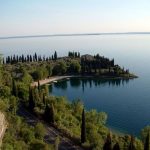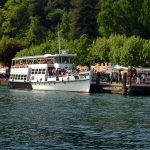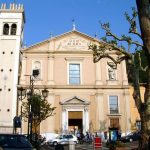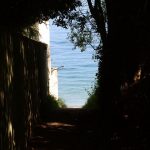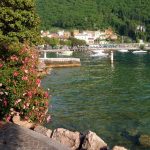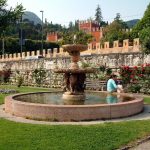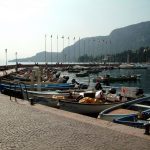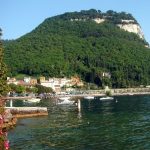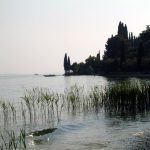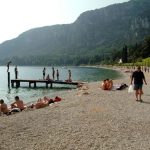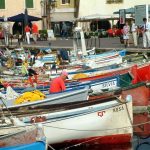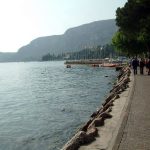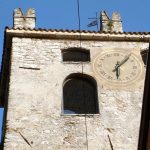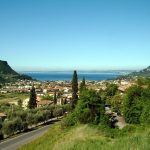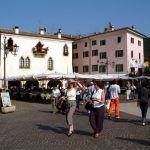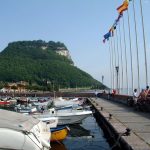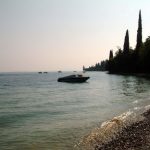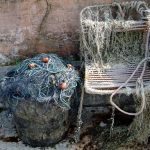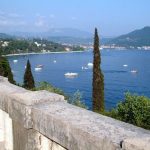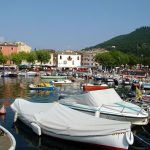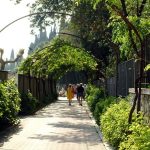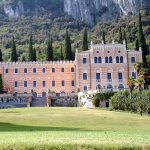Garda
HISTORY OF GARDA
During the Prehistoric and the Roman period, the town became an important strategic point of surveillance. Thanks to the fortress on the mountain “Rocca“, they could keep the lake under observation. From that time the town was named Garda, which means in Gothic language “WARDA” = observing. This landscape was ruled by the Longobards and the Franks, the last ones founded the court “Juridica gardensis”. Then Garda was governed by German officers, they lost the fortress and the titled family Turisendo got supremacy. For one year they could bear up against the terrible attacks of King Barbarossa (1162-1163). After longs battles the fortress and all its surrounding landscapes were incorporated in the Commune of Verona. After a short rule by the soldiers of Gian Galeazzo Visconti, Garda took part of “La Serenissima” (Republik of Venice, in 1405). The fishermen of Garda and Torri del Benaco founded an corporation and bought the fishing rights.
La Rocca del Garda
In 951 Queen Adelaide was kept prisoner in the fortress “La Rocca“. She was the widow of King Lotario and thanks to the help of a friar succeeded in escaping. In Villa Canossa, she became acquainted with King Ottone and late she married him. Today “La Rocca” is well-known for its wonderful, picturesque panorama and during the last years they made a lot of archaeological founds. Today you can find a real archaeological park. On the other side of the “Rocca”, called “La Rocca dei frati” is situated the Camandolesi heritage (altitude 309 m). The structure is hidden by high walls and dense forests , you can visit only the church and a few buildings. In the church, consecrated to San Giorgio, we can find 4 side ュ chapels , where you can admire precious paintings by Palma il Giovane (1544-1628) and by Francesco Paglia (1635-1714). Above the high altar, opera of the famous Bendedetti di Trento – we see a painting, where “San Giorgio kills a dragon” by Giovanni Tedeschi.
ARTS
The Parish of Garda is in a good preservation. It was built in the 18th. century, the steeple in 1571. In the “chiostro”, above its portal, there is to see the image of Ciborio, sculptured in the wall. When you come into the church, just at the beginning, on the right wall, you can find a marble ュstone of the 15th. century, covered in part of a wooden cross. There you can read:”Pope Innocenzo II, in the year of 1138″. The high- altar was built in 1716 and after some years the other altars. You can find paintings by Palma ,il Giovane and Francesco Paglia. In the part of the entrance there is a wonderful fresco “Agnus Dei” of the 14th. century. The confession chairs are made by the famous Brustolon from Belluno. Nearby the “Piazza” (square) of Garda lies the antique palace “Palazzo dei Capitani”, in Gothic-Venetian stile, built between the 14th. and 15th. century. Here lived some captains of the “Serenissima”. Going on, we reach the historical, picturesque centre, up to the enormous portal “San Giovanni“, where we can visit the palace “Palazzo di Fregoso“, a building of the 15th. century. This palace was habited by a titled family of Genova, which gave hospitality to the famous poet Bandello, perhaps the novel of Juliet and Romeo was born here. Let’s go on, on the promenade, along the lake. We pass the palace “Palazzo Losa“, famous for its wonderful loggia, built by Samicheli during the 15th. century for the Carlotti Pompei family. Leaving the historical centre, in direction to Torri del Benaco, we arrive at a little castle of the Becelli-Albertini family. It is an opera of the famous architect Ronzani, who has also planned the surrounding park, rich of innumerable old trees. Here King Carlo Alberto, from 1st. June till 11th. of June 1848 received a Lombardian delegation, guided by Gabrio Casati, bringing him the annexation act of Lombardia to Piedemonte.
ATTRACTIONS
The peninsola San Vigilio is one of the most charming and picturesque places of Lake Garda! Here, during the 16th. century, the nobleman Agostino Brenzoni built up a wonderful villa the plan naturally was by Sammicheli.
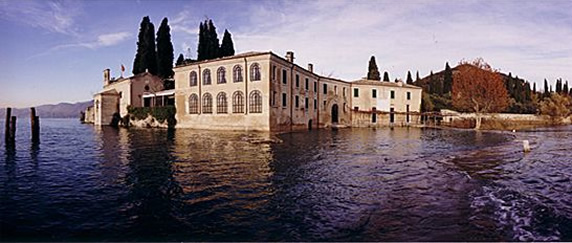
The villa is surrounded by a magnificent park with many sculptures. Also you can find a typical “limonaia” a green house with old lemon trees, an olive-yard ending in a dense wood, which covered the low slopes of Monte Baldo. Making part of the villa is a little chapel, consecrated to San Vigiglio and built in the 15th. century. Probably the famous painter Pisanello was born in San Vigilio (a Latin inscription tells about this fact). The idyllic bay, the limpid waters, the magnificent park, the characteristic port with a restaurant and an inn nearby have attracted and still are attracting a lot of people. Let us enumerate: L’Aretino, a friend of Agostino Brenzoni, Queen Marie Louise of Austria, Zar Alexander II of Russia, Winston Churchill, Prince Charles of England, King Juan Carlos of Spain, etc. The hills of San Vigilio are tree covered, a real natural event, rich of vegetation and famous rock inscriptions and drawings. These famous inscriptions and drawings, painted on the rocks of Lake Garda were discovered in 1964, concentrated in the region of Torri del Benaco, with the most wonderful drawings nearby San Vigilio. There were found more than 250 rocks with more than 3.000 diverse signs. The oldest ones go back to the Bronze Age (2.000 years B.C.).Most of these drawings and signs are human figures , like horsemen, or animals, crosses, geometric figures, circles and a game, named “merlèr“. Nearby Brancolino (San Vigilio) we can find the interesting inscriptions of Griselle and Cavalieri, human figures with arms, going back to the Bronze epoch. The most famous rock of Castelletto, painted full of ashes, today is lain out in the community house of Brenzone. They say, that these drawings were made by shepherds and huntsmen.
A folkloristic attraction in Garda is “palio delle contrade” a traditional festival, high points are the races with these antique, flat fisher-boats. Every 15th. of August this popular event takes place in all the romantic lanes of the town.The typical carnival figure of Garda is named “Gran Magna Aole“, who guides the carnival procession. He is accompanied by historical personalities, like Queen Adelaide and King Ottone etc.
